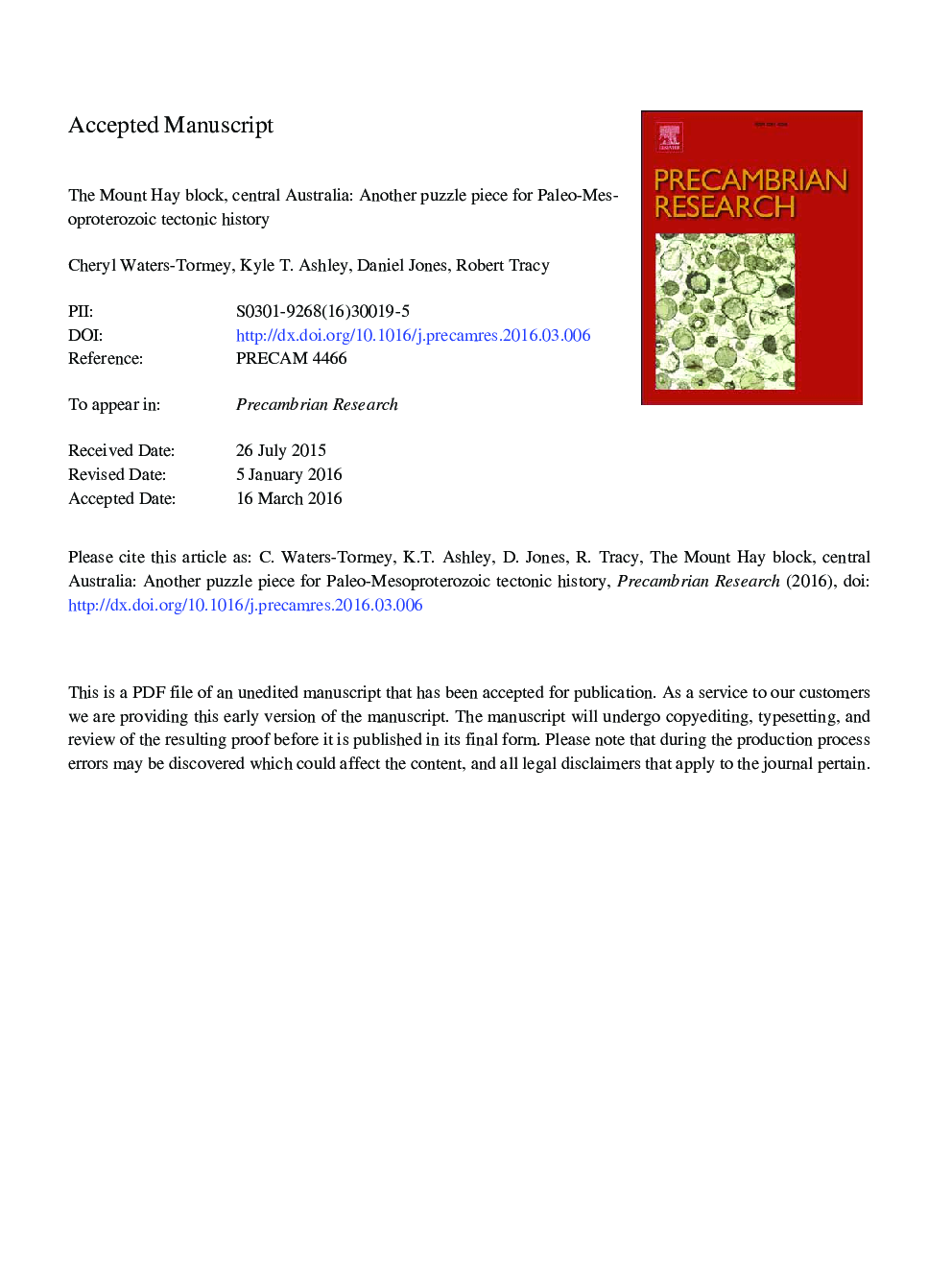| کد مقاله | کد نشریه | سال انتشار | مقاله انگلیسی | نسخه تمام متن |
|---|---|---|---|---|
| 6442151 | 1639594 | 2016 | 55 صفحه PDF | دانلود رایگان |
عنوان انگلیسی مقاله ISI
The Mount Hay block, central Australia: Another puzzle piece for Paleo-Mesoproterozoic tectonic history
ترجمه فارسی عنوان
بلوک کوه هی، مرکزی استرالیا: یکی دیگر از قطعه پازل برای تاریخ تکتونیکی پالئو-مسیوپرتروزی
دانلود مقاله + سفارش ترجمه
دانلود مقاله ISI انگلیسی
رایگان برای ایرانیان
موضوعات مرتبط
مهندسی و علوم پایه
علوم زمین و سیارات
ژئوشیمی و پترولوژی
چکیده انگلیسی
The 100 km2 Mount Hay block (Arunta Region, central Australia) is a >15 km thick crustal cross-section comprised of granulite facies tectonites containing a tectonothermal record from ca. 1803 to ca. 1552 Ma, as demonstrated by the combination of prior work and new monazite geochronology and thermobarometry. Igneous and sedimentary protoliths formed ca. 1803-1798 Ma during 1810-1790 Ma Stafford-Tanami time. Between ca. 1790 and 1740 Ma, nearly continuous magmatism in the Aileron Province, and possibly ages of recrystallized zircon and monazite in the Mount Hay block, record subduction along the southern margin of the Proterozoic Australia-Mawson continent. Geologic mapping and zircon and monazite geochronology demonstrate that the Mount Hay block was penetratively deformed between ca. 1720 Ma and 1700 Ma during 1735-1690 Ma Strangways time. This includes the >8 km thick Mount Hay sheath fold, which records NE-SW subhorizontal shear, once Paleozoic tilting of the Mount Hay block is removed. While still in the deeper crust (>798 ± 33 °C; >7.6 ± 0.7 kbar), fabrics along the northern edge of the Mount Hay block were transposed by the cross-cutting >7 km thick Capricorn ridge shear zone at ca. 1551.7 ± 5.5 Ma, during Chewings time. Once restored, the Capricorn ridge shear zone records NE-SW extension. A jump in strain rate while at high temperatures (â¼725 °C) initiated severe localization accommodated initially by pseudotachylite formation and cataclasis then mylonitization during Fe-rich fluid flux. Shearing may have continued to pressure-temperature conditions as low as <630 ± 25 °C and â¼3-5 ± 1.2 kbar indicating â¼7-14 km uplift. Fluid flow in the Capricorn ridge shear zone corresponds well with growing evidence for regional Fe ± K ± Si metasomatism with similar timing. In published tectonic reconstructions, Chewings aged deformation, including the Capricorn Ridge shear zone, may be related to subduction to the south, or re-convergence between the Proterozoic Australia-Mawson continent and Laurentia. Robust links between the kinematics of deformation and geochronologic constraints, and the ability to restore major structures to their original orientations, makes the Mount Hay block a valuable additional puzzle piece for Proterozoic tectonic reconstructions for Australia, and possibly the supercontinent Nuna.
ناشر
Database: Elsevier - ScienceDirect (ساینس دایرکت)
Journal: Precambrian Research - Volume 281, August 2016, Pages 537-565
Journal: Precambrian Research - Volume 281, August 2016, Pages 537-565
نویسندگان
Cheryl Waters-Tormey, Kyle T. Ashley, Daniel Jones, Robert Tracy,
